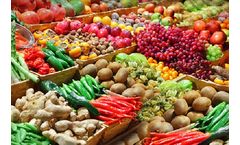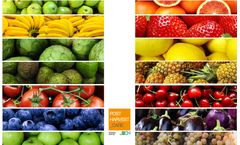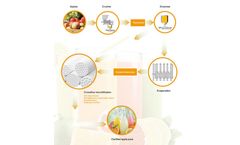Refine by
Pears Articles & Analysis
21 articles found
Whether you are new to growing indoors or a seasoned professional, one thing is for certain – you can’t take your eye off the ball with pest control! One of the most common pests to plague our grow rooms are the white aphid. Secondary to those are black aphids, which are very similar. If you’ve not experienced an aphid attack yet then count yourself lucky. There is no surefire ...
In cross-country tests of cherries, nectarines, and pears in semi-trailers equipped with steel-spring suspension systems, highest Power Spectral Density (PSD) levels were found at about 3.5 Hz. ...
For example, for most plant-based produce, some O2 content in the atmosphere helps the plant to respire, but these need to be balanced with increased CO2 concentrations to slow the rate of respiration sufficiently to increase the produce lifetime.7,8 However, there can be subtle differences between the optimum conditions for different types of fruit and vegetables, such as citric fruits which can ...
The most common examples of climacteric fruit are: apples, pears, tomato, custard apple, avocado, banana, mango, papaya, kiwi,.... ...
I may be considered new to the team at Pollen Systems, but what I am not new to is California’s Capital, Sacramento. ...
Pollen Systems is on the cutting edge of agricultural technology, and this summer marks my third year as Pollen Systems’ primary drone pilot in Washington and Oregon. If you are one of our clients, then you may have seen me on site previously with a Phantom 4 Pro, but our latest tool is a DJI Inspire 2 with a MicaSense Altum sensor, which has the multispectral and RGB imaging that clients ...
Advantages: Filtrate is clear with high transmittance Return muddy does not happen for a long time No secondary precipitation produced No need to add a filter aid Purely physical operation at room temperature No chemical reaction Does not destroy the heat-sensitive substances and affect the fruit flavor easy to use Reduce labor intensity and production costs Increase productivity Small footprint ...
The 400-acre Briggs and Eggers Orchards in the fertile Bonita Springs Valley of southern Arizona have been growing apples, peaches and pears since 1968. Owners Lance and Melissa Eggers and Joe and Jean Briggs have been committed to building a strong organic program with sustainable environmental practices since 1990. ...
The guide aims to make it easier for local councils to understand how they could use the technology in order to benefit their community. In January Pear Technology and GeoXphere formed a partnership agreement to help NALC spread the word about digital mapping. ...
Shade trees: Autumn Blaze Red Maple, striking red colorfast growing Red Maple October Glory, Southern Live Oak, attractive Bark Japanese Zelkova, American Elm, Bur Oak Tree, beautiful Swamp white oak, Chinese Elm tree, Chanticleer Pear etc. Tree Spade Design with Ornamental trees Ornamental trees are indispensable in landscaping in urban areas. ...
Bioconservación participated in the "Apple and Pear: Preservation and Quality" conference session which involved an oral presentation entitled “Use of a potassium permanganate ethylene absorbent to maintain apple quality during refrigeration in ULO storage." ...
Le Verger de la Blottière is a family-run company located in Maine-et-Loire in western France, which has been producing highly valued and quality apples and pears for three generations. Le Verger de la Blottière produces 20 different varieties of apples and pears, all valued for their taste and aromatic properties, where the notable Antares apple ...
” Added Resilience Codling moths were inadvertently introduced to the U.S. centuries ago from Europe and have afflicted apples, pears and walnuts ever since. Managing infestations has been difficult, with conventional chemical spraying being the most effective means. ...
ByEnsia
The region is considered one of Australia’s most productive, growing a wide variety of crops including grains, oil seeds, apples, pears and many other fruits. The canal automation saved 32,000 acre-feet (39 million cubic meters) of water per year from being diverted for crops, which was then used to improve habitat in the Murray River. ...
ByEnsia
The Conference pear has a greenish skin with brown marks and a consistent greenish-white pulp. ...
The Conference pear has a greenish skin with brown marks and a consistent greenish-white pulp. ...
Codling moth is the number one global pest of apples and pears, and the oriental fruit moth is the second. By switching from pesticides to pheromones, farmers worldwide can produce a safer product with less toxicity to the fruit, workers and environment. ...
Apple and pear fruits stored at low temperatures may suffer from chilling injury symptoms, caused by oxidative stress. ...
The comparison shows that the Anderson, Pears, Allsman, Langefors and Energy Transition (ET) methods have very close results to the OB. ...
A wide host range includes deciduous bushes and trees belonging to the family Rosaceae, but it is in association with fruit trees such as apple, pear, plum, peach, prune and cherry that it reaches economic importance. ...














